Day 1
For most countries, the capital dominates in tourism and beyond, but in Denmark, this is even more obvious. Without relying on statistical data, I dare say that most tourists visiting Denmark limit themselves to the capital or, at best, make short trips to its surroundings.
But as we know, to truly feel and understand a country, you have to go deeper. And that’s exactly what we’ll do — but we’ll still start with Copenhagen, if only because you’re almost guaranteed to arrive in Denmark through its airport. I, however, once did it differently: to save money, I flew into northern Germany, rented a car there, and along the way to Danemark visited Hamburg, Bremen, and Lübeck (mmm, Lübeck – I want to go back!).
So, Copenhagen (in Danish, København, from the Old Danish Køpmannæhafn, which literally means “merchants’ harbor”). At one time, it was the de facto capital of the Kalmar Union, a confederation of Denmark, Norway, and Sweden under Denmark’s leadership, which ruled rather strictly. But you can read the history on your own — for now, we’re heading out for a walk through the city.
We’ll begin from the most obvious starting point – the city hall, or rather, from the building on the corner of Vesterbrogade and Andersen Boulevard just across the city hall. On the tower of this building sits the famous Copenhagen barometer: in good weather, a girl on a bicycle appears, and in bad — a man with an umbrella. Crossing the boulevard brings us to Rådhuspladsen, the City Hall Square, used for concerts, performances, and public celebrations.
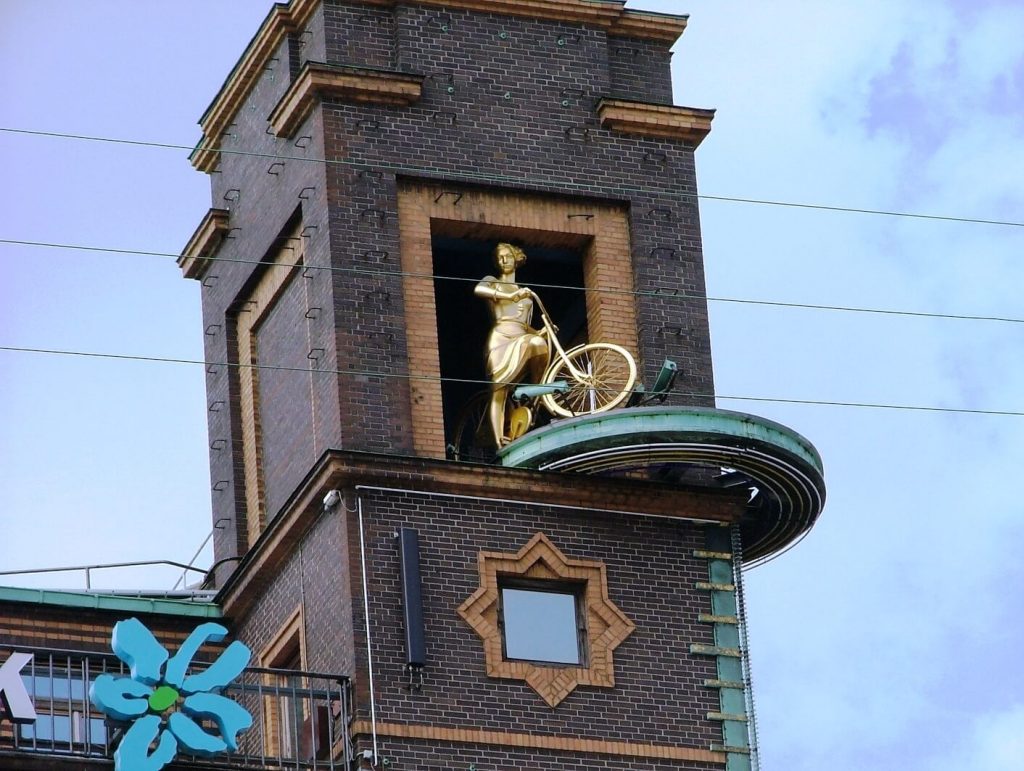
The current Copenhagen City Hall building was constructed in 1905 in the National Romantic style, but modeled by architect Martin Nyrop after the Siena, Italy City Hall. It dominates the square with its facade decorated with scenes from Scandinavian mythology, and features a gilded statue of Absalon — a leading politician and father of the Danish church in the second half of the 12th century, and close advisor to King Valdemar I of Denmark.
Above the building rises a slender clock tower 105.6 meters tall — one of the highest points in this generally low-rise city. While in the square, you will see a tall brick column with two bronze Vikings on it playing lur, a trumpet-like instrument from the Bronze Age. According to a legend, if Denmark is ever in danger, the Vikings will blow their trumpets and awaken the giant Holger Danske sleeping in the dungeons of Kronborg Castle to save the country.
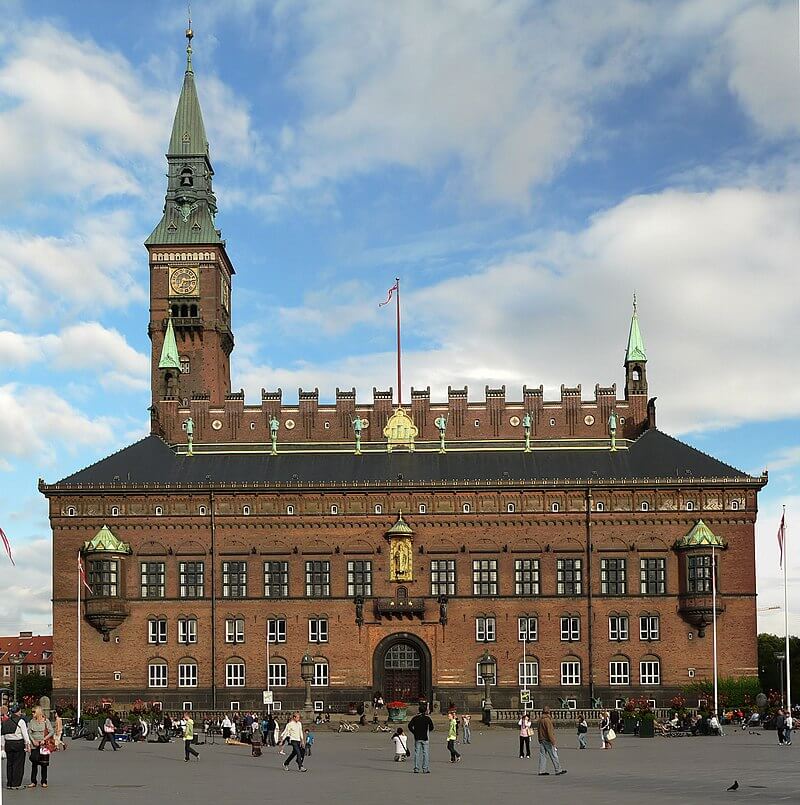
Unlike the one in Stockholm, there are no guided tours to take you into Copenhagen’s City Hall, so after taking a look, we move on along Strøget — the main shopping street of the city, starting from the City Hall square. Together with its side streets and historic squares, it forms the longest pedestrian zone in the world — 3.2 km long — created in 1962.
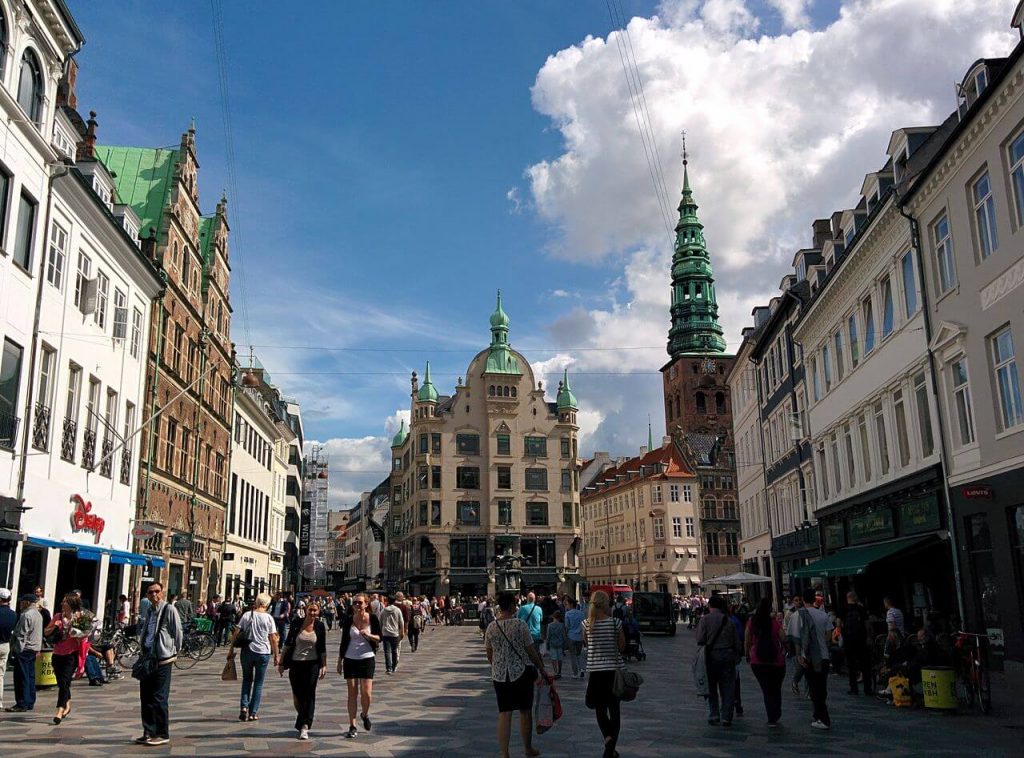
A curious fact from copenhagenet.dk: in 1967, when Copenhagen celebrated its 800th anniversary, Strøget hosted the world’s longest coffee table — 1.2 km long — where over 800 cups of coffee and more than 1,000 of the famous City Hall pancakes were served. These pancakes are traditionally offered to official guests on special occasions. Naturally, this feat was recorded in the Guinness Book of Records. Strøget is worth a stroll even if you’re not planning to shop in the many brand-name stores here.
After about a kilometer, you’ll reach Amagertorv square with the beautiful Stork Fountain, gifted in 1894 by Crown Prince Frederik and his wife for their silver wedding anniversary. Since 1950, there ia a tradition for newly certified midwives (symbolically, storks!) to dance around the fountain. Many consider this square to be the city’s central. In the Middle Ages, farmers from the island of Amager sold their goods here — hence the name.
Notable buildings around the square include Ole Haslund’s House (Ole Haslunds Hus), an example of 19th-century Danish historicism, and Mathias Hansen’s House (Mathias Hansen Hus) at number 6, home to the Royal Copenhagen store. The latter is one of the oldest preserved buildings in Copenhagen, built in 1616 for then-mayor Mathias Hansen. It’s a classic Dutch Renaissance-style house with gables and a copper roof. Some of the copper downspouts are decorated with dragon heads.
Just 400 meters from Amagertorv Strøget flows into Kongens Nytorv (The King’s New Square), the largest square in the city, featuring an equestrian statue of King Christian V. The square is surrounded by impressive buildings. The oldest of them is Charlottenborg Palace from the 17th century, which now houses the Royal Danish Academy of Fine Arts. But the most interesting, in my opinion, is the Royal Danish Theatre, where Hans Christian Andersen once studied ballet. In 1931, an Art Nouveau-style New Stage building was added, now housing Danish Radio as well.
Also on the square you’ll find the flagship Magasin du Nord department store, Copenhagen’s oldest tavern Hviids Vinstue (No. 19), and the so-called Old Kiosk — a large phone booth from 1913. Built in neo-Baroque style with a copper roof and hand-carved ornamentation, it now serves as a small café with all the tables outside. In winter, a free ice skating rink is set up in the aquare with skate rentals available. Every June, high school graduates from all over the city gather on the square to celebrate the end of school.
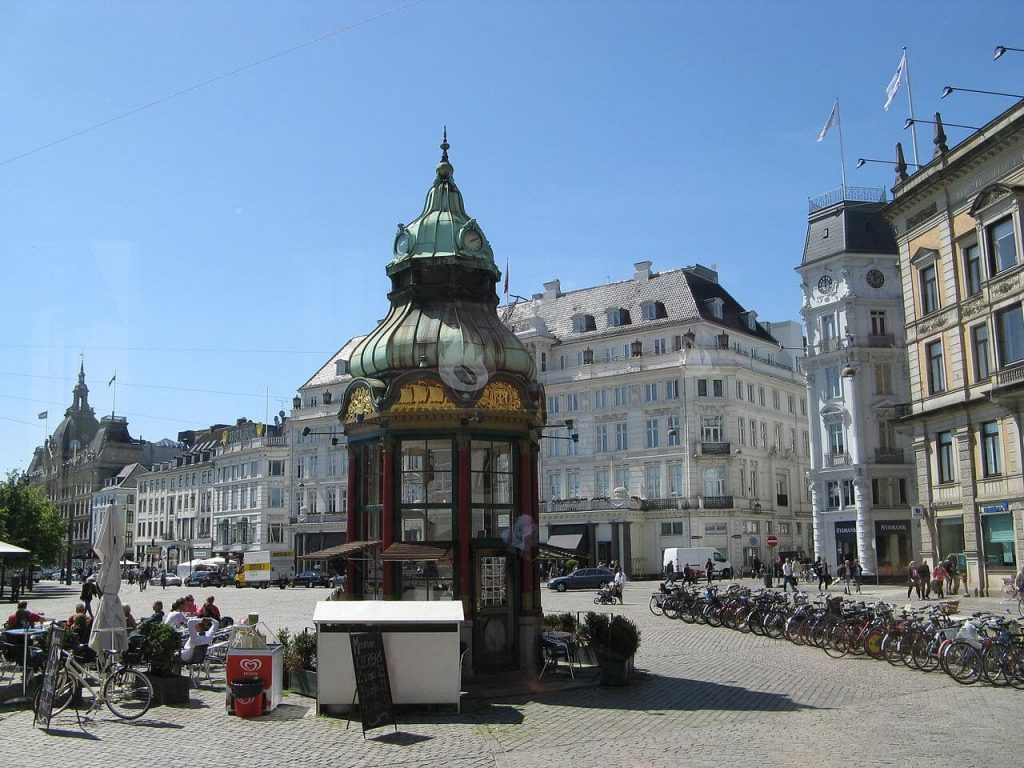
Another option: just behind the building at 11-1 Strøget, turn left (or even better — come back from Amagertorv) onto the city’s oldest square — Gammeltorv, the Old Market, featuring the city’s oldest fountain, the 1608 Caritas (Charity) Fountain. From this square, we head toward the Church of Our Lady (Vor Frue Kirke), the city’s Lutheran cathedral built in the neoclassical style in the 18th–19th centuries.
It’s worth entering the chirch to see the marble statues of the twelve apostles and other works by the famous 19th-century Danish sculptor Bertel Thorvaldsen, who spent most of his years in Rome and returned to Denmark shortly before his death.
Next to the cathedral is the historic main building of the University of Copenhagen, and just a five-minute walk from there is the famous Round Tower, Rundetårn (Købmagergade 52A), a 17th-century structure and the oldest functioning observatory in the world. It is known for its spiral ramp, which almost reaches the top — Peter the Great once rode up it on horseback, followed by Catherine I in a carriage. Later, cars were driven up the ramp and bike races were held there.
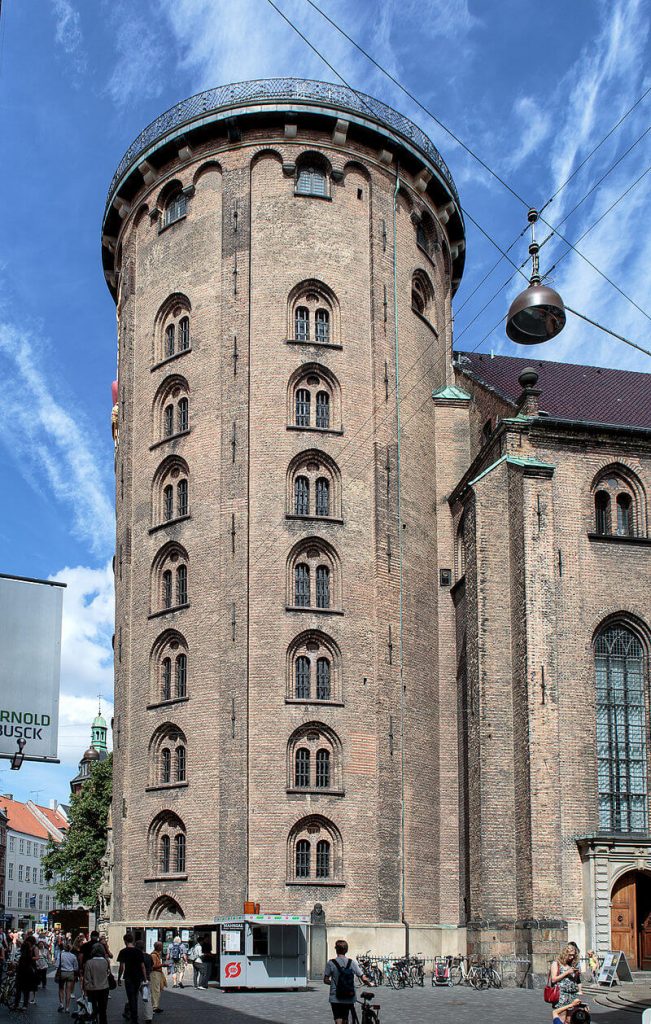
You can climb to the tower’s observation platform daily from October to March, 10:00 to 18:00, and on Tuesdays and Wednesdays until 21:00. On those two days, the ticket price includes telescope stargazing from 18:00 to 21:00. From April to September, hours are 10:00 to 20:00. Entry is 60 DKK, 30 DKK for students, and free for those under 17.
From the Round Tower, it’s a 900-meter walk to Rosenborg Castle (Rosenborg Slot), built in early 17th century in Danish Renaissance style. The castle houses the Danish royal regalia, the collection of royal jewels, and the throne of Danish monarchs.
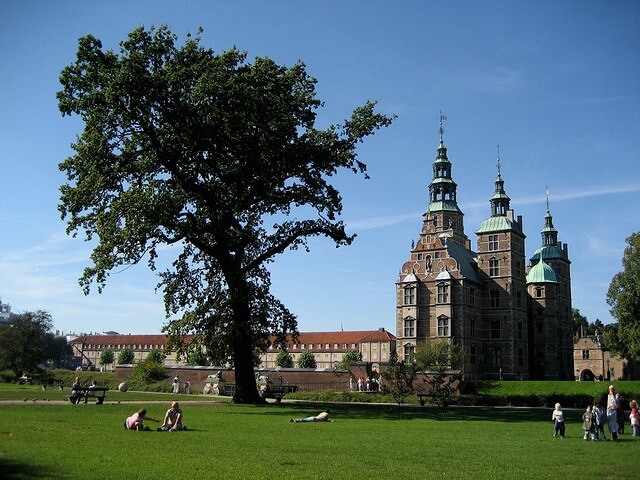
From Rosenborg Castle, you can walk (1.4 km) through its beautiful King’s Garden (Kongens Have) to Amalienborg Palace — the current residence of the royal family, built in the 17th–18th centuries in Rococo style — and then continue to Nyhavn, the New Harbor — one of Copenhagen’s most iconic and picturesque areas. (Keep in mind: the gardens also house the barracks of the palace guards from Amalienborg, Rosenborg, and Christiansborg, and the through passage closes in the early evening.) Nyhavn used to be a commercial port where ships from around the world docked, bustling with pubs, bars, and sailors on shore leave.
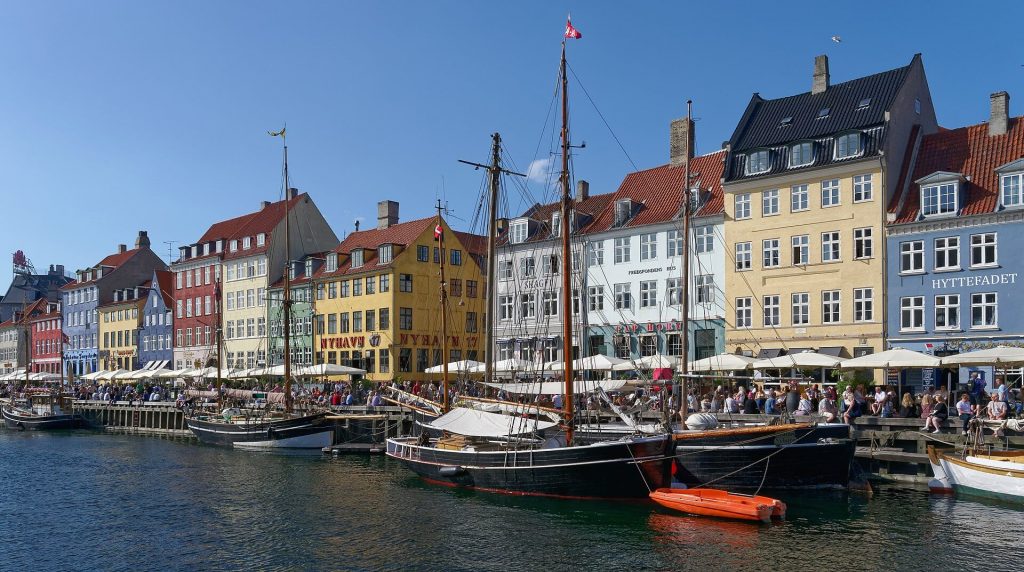
Today, the beautiful old buildings have been restored, and the pubs and restaurants still occupy a central place in the old port. You can also take a boat tour through the city’s straits and canals from here. In addition to the company at the butt of the canal, there’s a cheaper one just a little further along the right bank – head that way.
The boat tour route takes visitors past the iconic Little Mermaid statue and along Christianshavn Canal, whose banks are lined with hundreds of yachts, barges, and other vessels, forming a vivid mosaic of colors and shapes. In a gap between the buildings, you’ll see the black-and-gold spire of the Baroque Church of Our Saviour (Vor Frelsers Kirke), built in the 17th century and standing 90 meters tall. You can climb to the top using an external spiral staircase that wraps around the spire four times counterclockwise. It’s one of the city’s must-see landmarks.
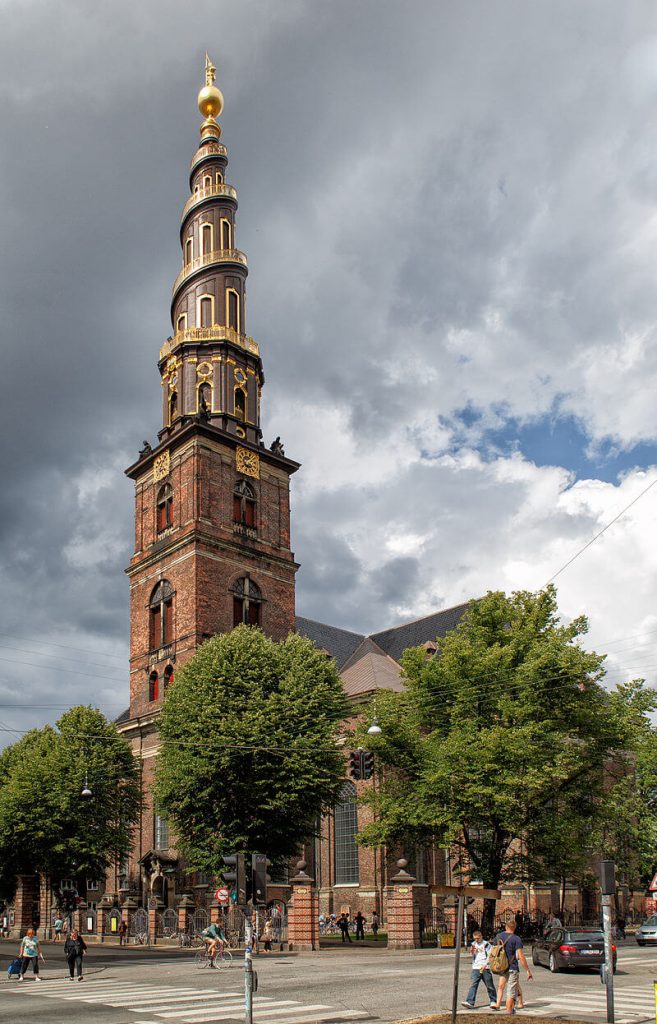
The route passes also by the modern Opera House, the Thorvaldsen Museum built in Greek style, under the Marble Bridge, past the modern extension of the Royal Library known as the Black Diamond, and by one of the city’s oldest churches – Holmens Kirke, also known as the Naval Church. After the boat tour, walk 800 meters to the square in front of the former royal palace, Christiansborg Slot.
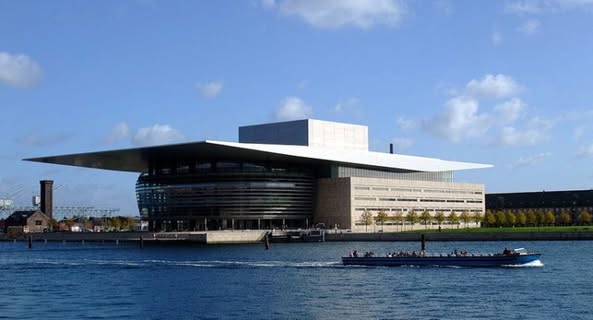
Photo by James Cridland.
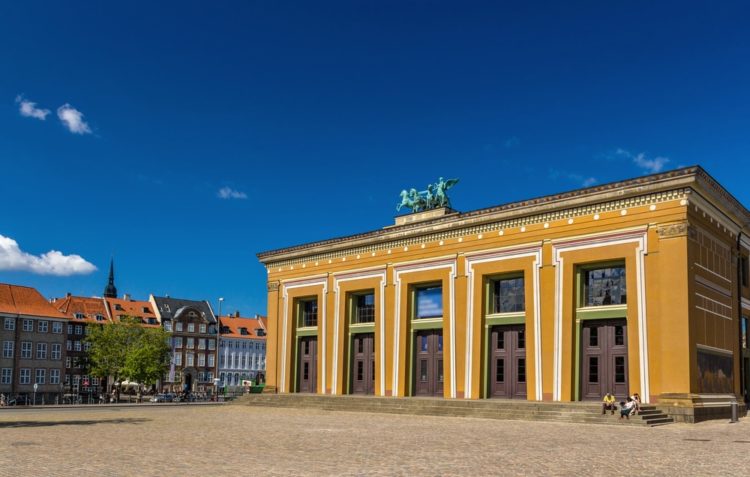
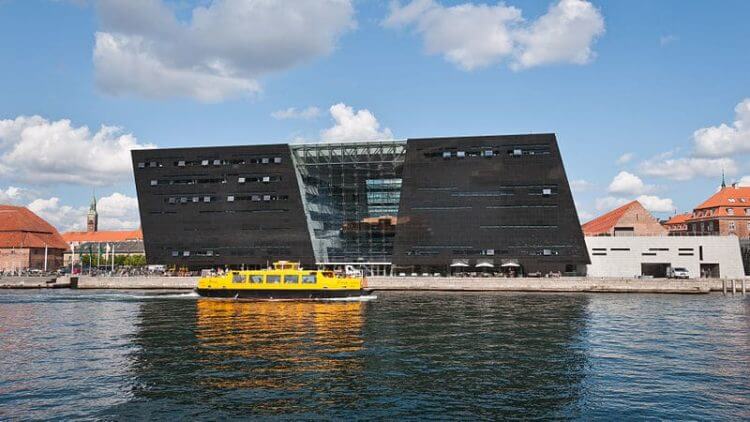
On the square stands an equestrian statue of Frederik VII, and to the left there is the Old Stock Exchange (Børsen), built in the 17th century in Danish Renaissance style. It’s one of Copenhagen’s most remarkable buildings, known for its twisted spire formed by four intertwined dragon tails. The spire is topped by three crowns, symbolizing the kingdoms of Denmark, Norway, and Sweden. The dragons were believed to protect the building from enemies and fire.
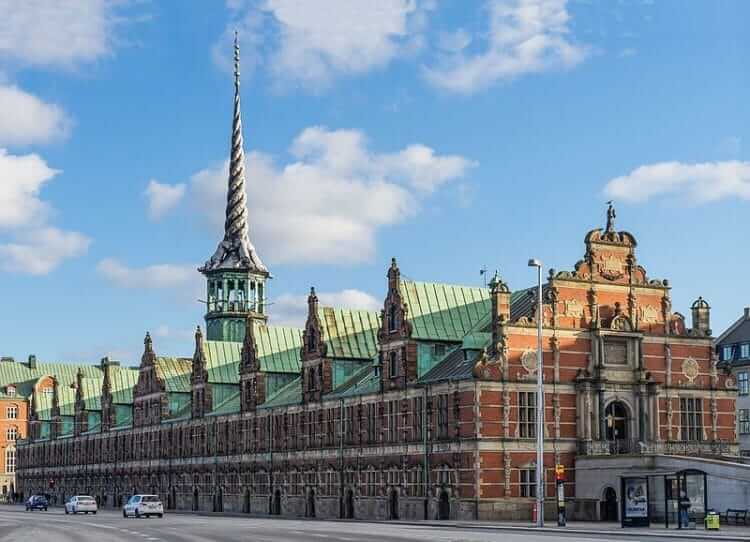
Christiansborg Palace, abandoned by the monarchy after a fire in 1884, houses today the Danish Parliament, the Prime Minister’s office, and the Supreme Court. It also includes the Royal Reception Rooms, open to the public, the Royal Chapel, and the Royal Stables. The palace tower, with two crowns on top, stands 106 meters tall, the highest point in the city.
Entering the courtyard of Christiansborg Palace, we turn left into the beautiful courtyard of the Royal Library with a statue of the philosopher Søren Kierkegaard. Take note of the metal rings attached to the wall — they were used not for tying horses, but boats: water once reached this point. From the library, it’s a 600-meter walk straight down Tøjhusgade and Ny Kongensgade to Andersen Boulevard, to the point 500 meters away from the spot where we began — but close the Ny Carlsberg Glyptotek, one of Copenhagen’s finest art museums.
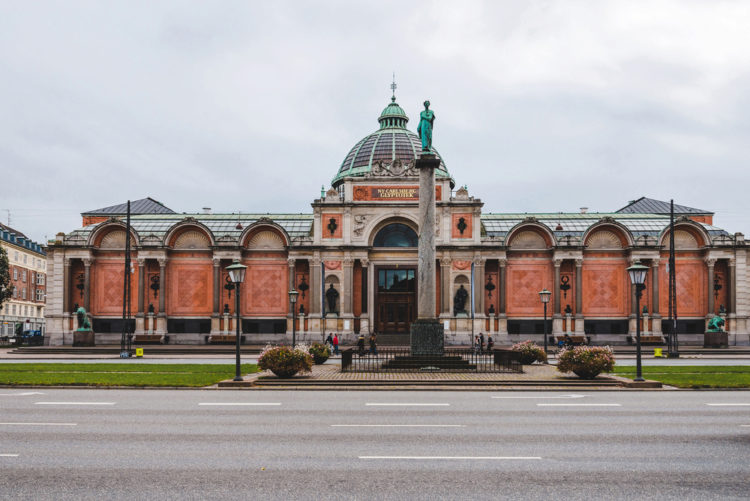
Day 2
If you walked the full route described yesterday and even visited the Glyptotek, today you’ll probably want to get a closer look at the Little Mermaid. It’s a bit far from the city center (though only just over a kilometer from Amalienborg Palace, which you visited yesterday), and if you’re not driving, whether you take the metro to Østerport station or bus No. 26, you’ll still have to walk about 20 more minutes.
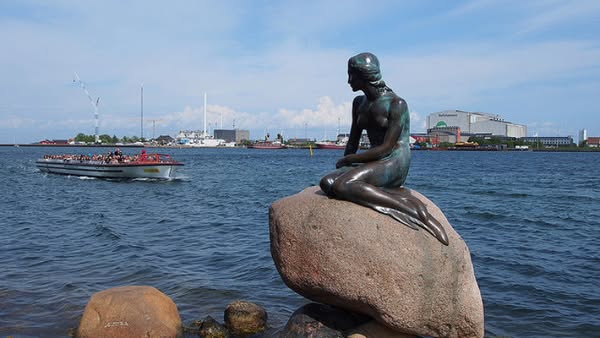
If you’re driving (from Nordre Toldbod 7 Parking it is 500 m to the Little Mermaid), you’ll likely pass a district with straight-lined streets with small two-story houses. This is Nyboder — a historic residential area initiated by King Christian IV in 1631 for sailors and their families. By 1641, about 200 houses had been built, each around 40 m². Originally, they were painted in Denmark’s national colors — red and white — rather than today’s ochre with red roofs.
Today these houses belong to the Danish military and are allocated to servicemen of various branches. Nyboder lies at the foot of a hill where Kastellet is located — an imposing 17th-century fortress shaped like a five-pointed star. It still belongs to the Danish Ministry of Defense. Only the historic cannons on the ramparts remain from its former grandeur — no towers or stone walls anymore.
Near the parking area, don’t miss the Gefion Fountain (Gefionbroen) from the late 19th century. The fountain was gifted to Copenhagen by the famous Carlsberg Brewery on its 50th anniversary. The sculpture shows powerful bulls led by the goddess Gefion — from a legend in which the Swedish king promised to give her as much land as she could plough in one night. Gefion turned her sons into bulls and ploughed a vast area that later became Denmark.
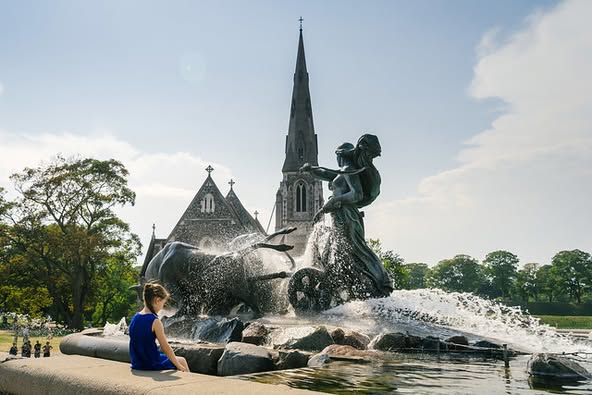
Photo by Benson Kua.
Museum lovers will be pleased to know that Copenhagen has over sixty museums, in addition to the Glyptotek and the Thorvaldsen Museum. Here are the main ones:
- The National Gallery with works by Rubens and Rembrandt (Solvgade 48–50)
- The National Museum of Denmark, covering history from the Stone Age to the present day (Ny Vestergade 10)
- The David Collection (Eastern museum based on the private collection of businessman Christian Ludvig David, Kronprinsessegade 3)
- The “Hans Christian Andersen’s World” museum, where 3D animation brings to life his famous fairy tales (Rådhuspladsen 57)
- Ripley’s Believe It or Not! — a museum by British collector and journalist Robert Ripley, filled with oddities, riddles, curiosities, and strange events (Rådhuspladsen 57)
- The largest aquarium in Northern Europe (Jacob Fortlingsvej 1)
- The Carlsberg Beer Museum (Gamle Carlsberg Vej 11)
- The Museum of Post and Television
- The Guinness World Records Museum
- The Naval Museum
- The Viking Ship Museum
- The Museum of Military History and Weapons — and many more.
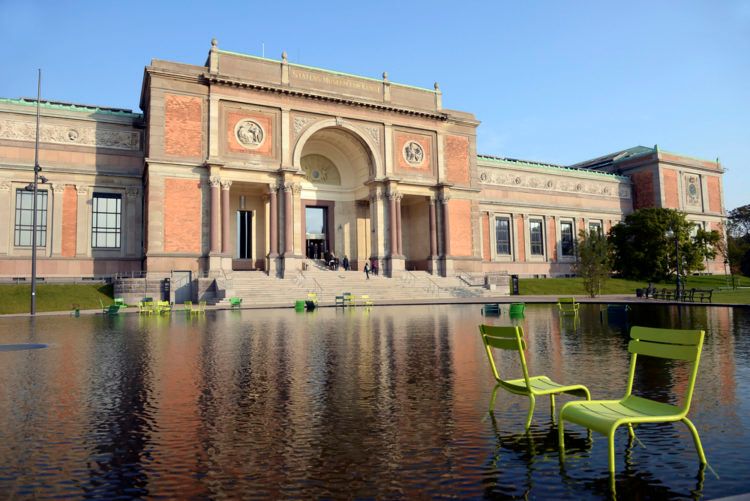
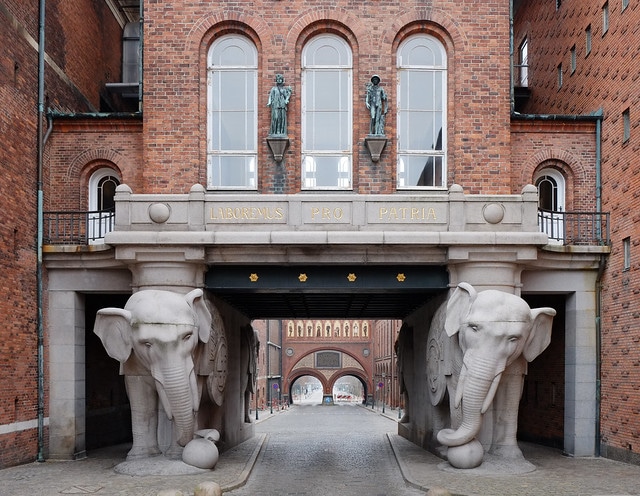
Photo by Gabriel Hes.
In addition, the city also has a Botanical Garden (Gothersgade 128, opposite Rosenborg Castle) and a Zoo (Roskildevej 38).
Yesterday I forgot to mention that not far from the royal palace stands the most majestic church in the city – the Frederik’s Church in Rococo style, commonly known as the Marble Church (Marmorkirken). It was opened in the late 19th century after nearly 150 years of construction. The green dome of the church, supported by 12 columns, has a diameter of over 30 meters.
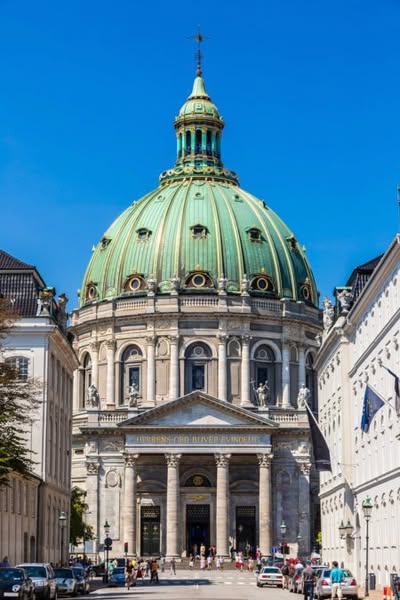
Those interested in modernist architecture must visit Grundtvig’s Church (Grundtvigs Kirke), built in the expressionist style rarely used for religious buildings. It is located in the Bispebjerg district (På Bjerget 14B). The contrast between its severe exterior and its stark but light-filled interior is striking.
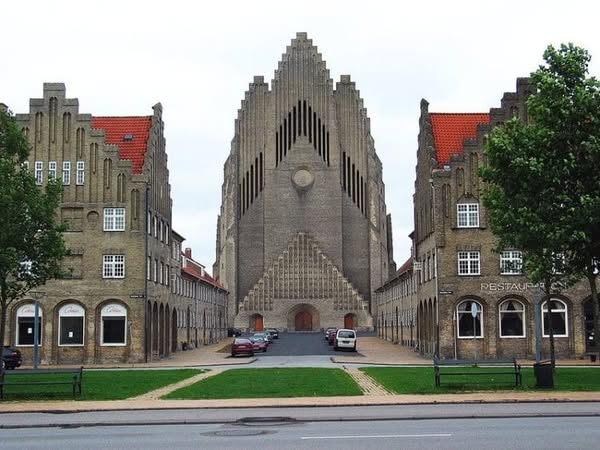
Photo by Hans Andersen.
Undoubtedly, the most unusual attraction in Copenhagen is Freetown Christiania. Christiania was founded on September 26, 1971, when a group of hippies illegally moved into abandoned army barracks, creating a large squat of several buildings. The police tried several times to evict them, but unsuccessfully: the area was large, and the squatters numerous. The issue reached government level. In 1972, Christiania reached an agreement with the Ministry of Defense to pay for electricity and water and received the status of a “social experiment.” After decades of struggles, mutual accusations, free-flowing drugs, and battles with drug gangs trying to take over, the government relented and developed a legalization plan. Today, it is a kind of virtual state (you need a ticket to enter,) and a popular tourist spot in the city.
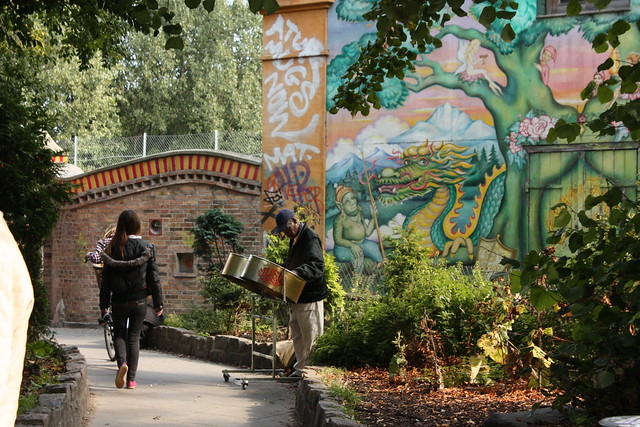
Photo by Kieran Lynam.
In the evening, you’ll most likely be tempted to visit Tivoli, one of the oldest amusement parks in the world and the third most visited in Europe – a green oasis in the heart of Copenhagen. The grounds are charming, good concerts are held nightly, and every day ends with a musical parade. It is said that Walt Disney got the idea for Disneyland after visiting Tivoli in Copenhagen.
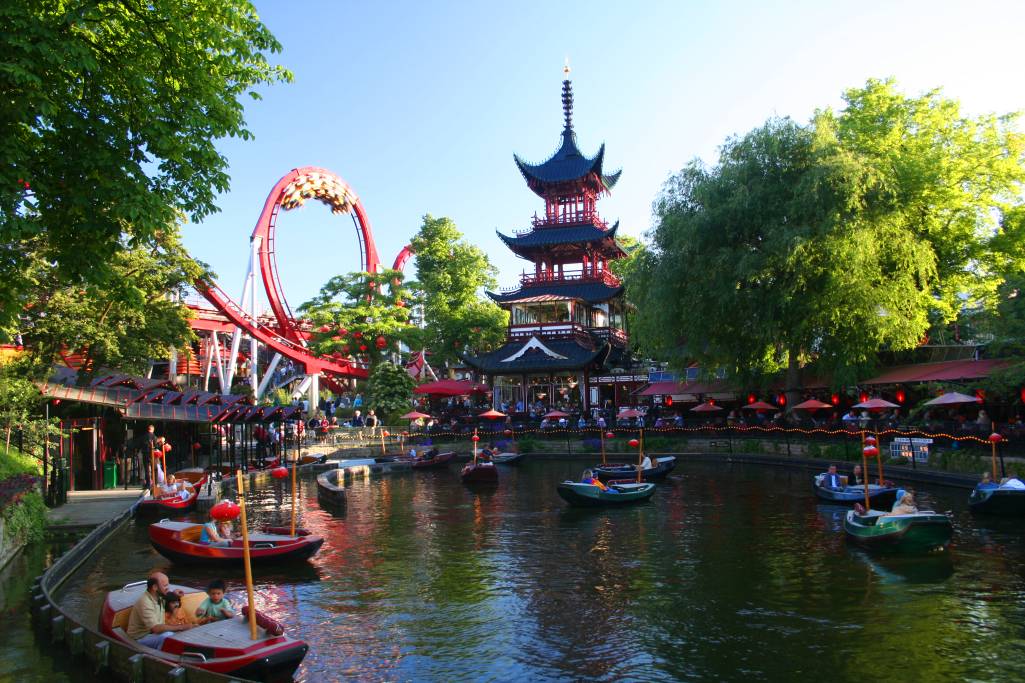
Photo by Malte Hübner, Public Domain, https://commons.wikimedia.org/w/index.php?curid=228967

